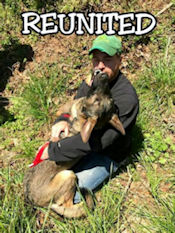 Free/Lost/Found/Stolen/Missing German Shepherds Dogs
Free/Lost/Found/Stolen/Missing German Shepherds Dogs
![]() German Shepherd Dog Owner, Trainer and Breeder Gifts
German Shepherd Dog Owner, Trainer and Breeder Gifts
![]() German Shepherd Gifts for Owners, Trainers and Breeders
German Shepherd Gifts for Owners, Trainers and Breeders
 German Shepherd Obedience Trainers
German Shepherd Obedience Trainers
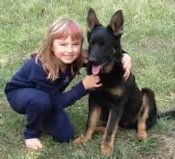 German Shepherd Protection Dogs
German Shepherd Protection Dogs
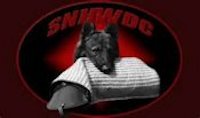 German Shepherd Schutzhund/IPO Clubs and Organizations
German Shepherd Schutzhund/IPO Clubs and Organizations
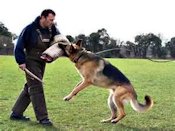 German Shepherd Schutzhund/IPO Protection Dog Trainers
German Shepherd Schutzhund/IPO Protection Dog Trainers
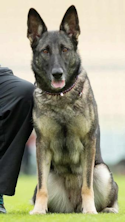 German Shepherd Working Line Dogs
German Shepherd Working Line Dogs
Searched for Pea
CATEGORIES
|
Service Animals The Department of Justice published revised final regulations implementing the Americans with Disabilities Act (ADA) for title II (State and local government services) and title III (public accommodations and commercial facilities) on September 15, 2010, in the Federal Register. These requirements, or rules, clarify and refine issues that have arisen over the past 20 years and contain new, and updated, requirements, including the 2010 Standards for Accessible Design (2010 Standards). How “Service Animal” Is Defined Service animals are defined as dogs that are individually trained to do work or perform tasks for people with disabilities. Examples of such work or tasks include guiding people who are blind, alerting people who are deaf, pulling a wheelchair, alerting and protecting a person who is having a seizure, reminding a person with mental illness to take prescribed medications, calming a person with Post Traumatic Stress Disorder (PTSD) during an anxiety attack, or performing other duties. Service animals are working animals, not pets. The work or task a dog has been trained to provide must be directly related to the person’s disability. Dogs whose sole function is to provide comfort or emotional support do not qualify as service animals under the ADA. This definition does not affect or limit the broader definition of “assistance animal” under the Fair Housing Act or the broader definition of “service animal” under the Air Carrier Access Act. Some State and local laws also define service animal more broadly than the ADA does. Information about such laws can be obtained from the State attorney general’s office. If someone's dog calms them when having an anxiety attack, does this qualify it as a service animal? It depends. The ADA makes a distinction between psychiatric service animals and emotional support animals. If the dog has been trained to sense that an anxiety attack is about to happen and take a specific action to help avoid the attack or lessen its impact, that would qualify as a service animal. However, if the dog's mere presence provides comfort, that would not be considered a service animal under the ADA. Where Service Animals Are Allowed Under the ADA, State and local governments, businesses, and nonprofit organizations that serve the public generally must allow service animals to accompany people with disabilities in all areas of the facility where the public is normally allowed to go. For example, in a hospital it would be inappropriate to exclude a service animal from areas such as patient rooms, clinics, cafeterias, or examination rooms. However, it may be appropriate to exclude a service animal from operating rooms or burn units where the animal’s presence may compromise a sterile environment. Service Animals Must Be Under Control Under the ADA, service animals must be harnessed, leashed, or tethered, unless these devices interfere with the service animal’s work or the individual’s disability prevents using these devices. In that case, the individual must maintain control of the animal through voice, signal, or other effective controls. Do they have to be quiet and not bark? Under control also means that a service animal should not be allowed to bark repeatedly in a lecture hall, theater, library, or other quiet place. However, if a dog barks just once, or barks because someone has provoked it, this would not mean that the dog is out of control. Do service animals have to wear a vest or patch or special harness identifying them as service animals? No. The ADA does not require service animals to wear a vest, ID tag, or specific harness. |
German Shepherd Dog Studs This is a new Category! "GSDsite.com Will Never Stop Improving" Choosing a German Shepherd Stud for your female is a very important decision. As breeders we take the place of nature and select what we feel is the best male to compliment our females. There is so much to consider as� you review the stud listings here on GSDsite. Keep in mind the ancestry of your dog, physical and mental traits you want to retain and improve upon, health clearances such as hip and elbow certification and screening for DM. Success in the conformation ring or on the trial field is another component to evaluate. Things to consider when selecting your German Shepherd Stud: Titles and awards: Generally people don't bother putting time and� effort into a male that will not be desirable as a stud in the end.� As a result most European males are not considered stud candidates unless they have� attained a high degree of training such as Schutzhund 3 or IPO3. American studs typically have some form of American Champion associated with their list of accomplishments. Show ratings: Show ratings can be� difficult to assess. May breeders offering stud services seem to have it confused themselves. Show ratings are broken into two catagories; the level of the event the rating was given, World,� National, Regional, and Club as well as the placement itself, V1, V2, V3, or SG1, SG2, SG3, etc. If a dog is advertised with a show rating it should be identified as to where and what the rating was. Protocol is the show rating given with the dogs name is earned at the World level or National level the consumer should check the results to see where the rating was earned. Ratings earned at Regional and Club level are often presented and mis-interpreted as World or National level results. Health clearances: Typical clearances are the Hip and elbow certifications offered by OFA or the German 'a' stamp program. There are other certifications obtainable from other organizations. Check to see how they compare to the American and European standard. Another health consideration now emerging on the scene is the DNA test for DM. Most stud owners can advise you if their dog has been tested as a carrier and what the result is. In the American breed there are tests for other ailments prone to the breed. Ask your stud dog owner what test were done if your selection is an American male. Production: By the time the dog is offered as a stud male, there should be some history of the dogs' ability to produce. Many top dogs are top producers, many are not. Check the results of the males offspring and talk to the owner to find out specifically what their male has produced. |
|
The black German shepherd is one of the many different coat colors and patterns that are associated with the German shepherd breed. The black German shepherd is not a separate dog breed from the German shepherd breed like the white German shepherd which is recognized as a separate dog breed by some kennel clubs. The black coat of the German shepherd is the result of genes passed down to the pup by the parents. > There are some distinct variations between the Black German Shepherd and the standard German Shepherd. The Black German Shepherd has retained its more traditional look of the breed. The Black German Shepherd has a much straighter back. It also does not "cringe", an appearance common to regular German Shepherds. The coat has many variations and can be long or short with a flowing mane, feathering and skirting. Black German Shepherds have very pleasant temperaments and are very loyal, watchful and self-assured dogs. They very rarely ever back down. These dogs are very trainable and their training should begin when they are very young. The only health problem you must be aware of in a Black German Shepherd is hip and elbow dysplasia. Preventative measures should be taken early on. The Black German Shepherd makes a great family pet, but might be a bit strong for small children. |
Working Line German ShepherdBreed CharacteristicsAKC GroupHerdingOriginGermanyTypeWorking / CompanionBreed SizeMedium-LargeHeight24-26 inches (Males)22-24 inches (Females)Weight66-88 pounds (Males)49-71 pounds (Females)TemperamentBrave, Protective, Guard-dog, Athletic, Strong, Confident,Intelligent, Alert, Independent, Loyal, High-energy,Aloof with Strangers, Affectionate, Versatile, TerritorialAppearanceMuscular, Pointy Ears, Athletic, Straighter ToplineLifespan10-13 yearsHealth IssuesBloat (GDV), Pancreatitis, Hip Dysplasia (rare)Coat ColorsBlack Sable, Black & Tan, Solid BlackCoat TypeDouble-coated, Short-Medium, MediumSheddingHeavyGroomingModerateEasy to TrainYesExercise NeedsMedium-HighHypoallergenicNoChild FriendlyYesPet FriendlyYesGood for new ownersYes |



 Categories
Categories  Areas
Areas  Place a FREE ad
Place a FREE ad
 Colors
Colors 










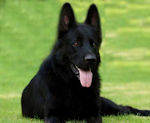

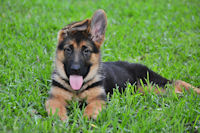
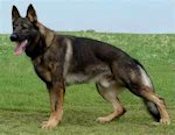
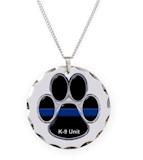
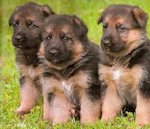



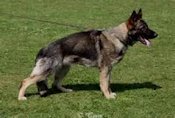



 Alabama
Alabama
 Arkansas
Arkansas
 Bulgaria
Bulgaria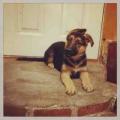
 California
California
 Colorado
Colorado

 Connecticut
Connecticut

 Florida
Florida



 Georgia
Georgia

 Germany
Germany